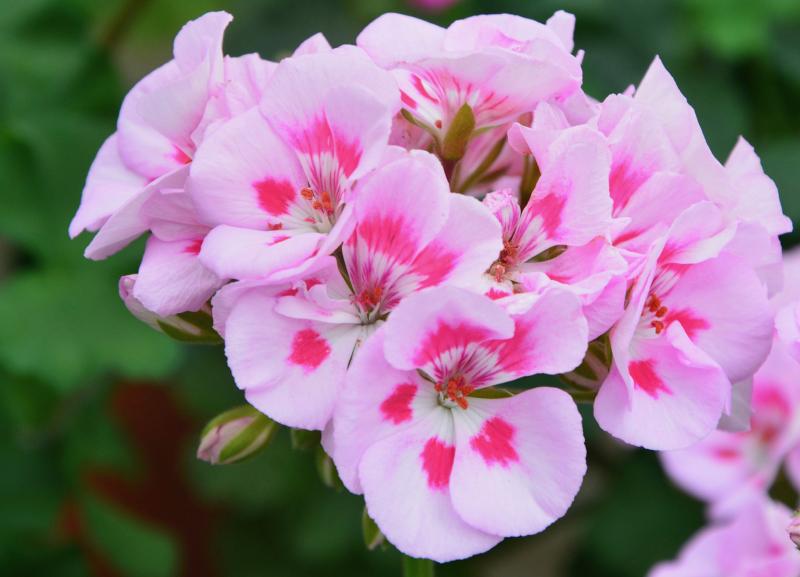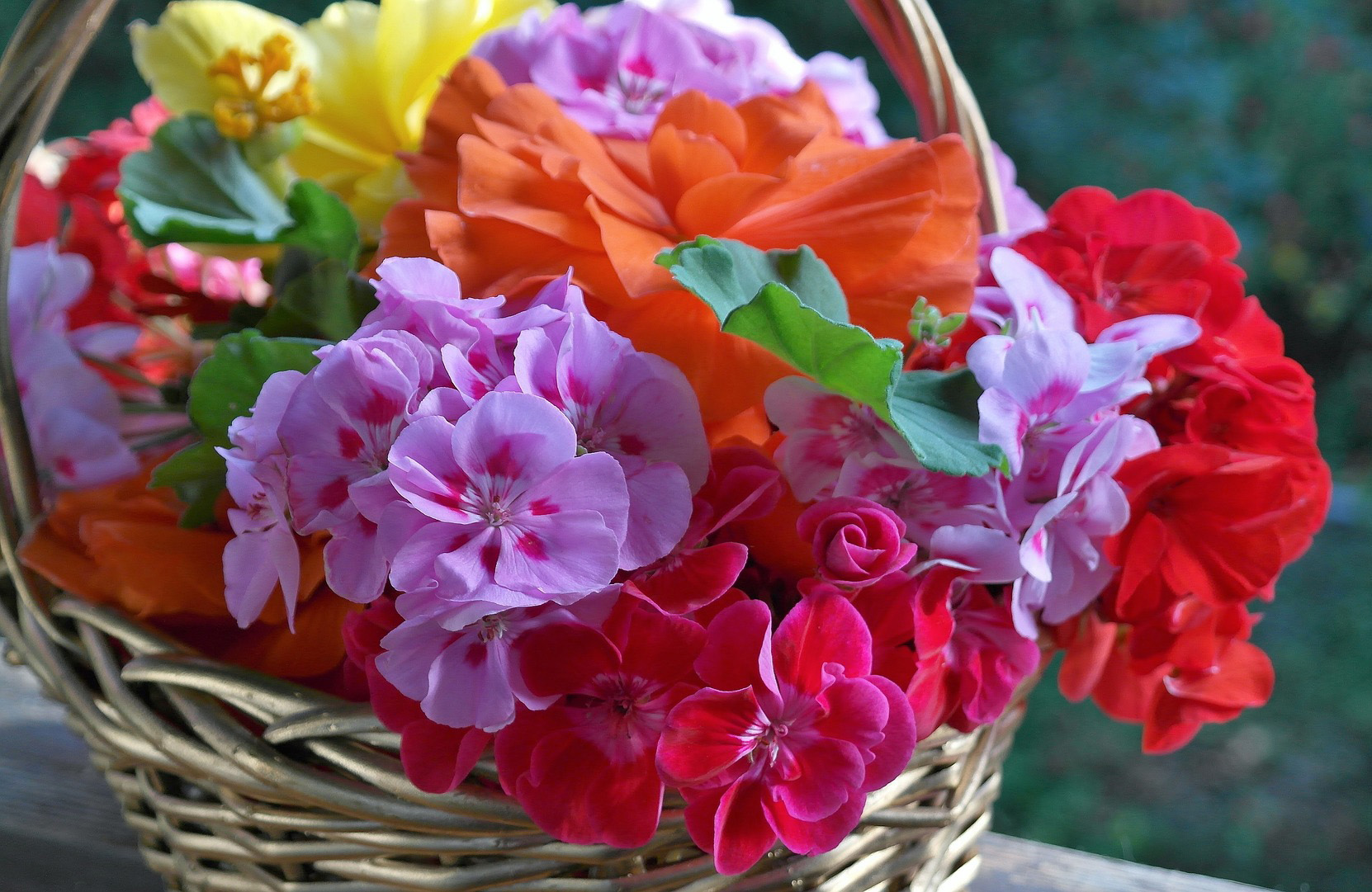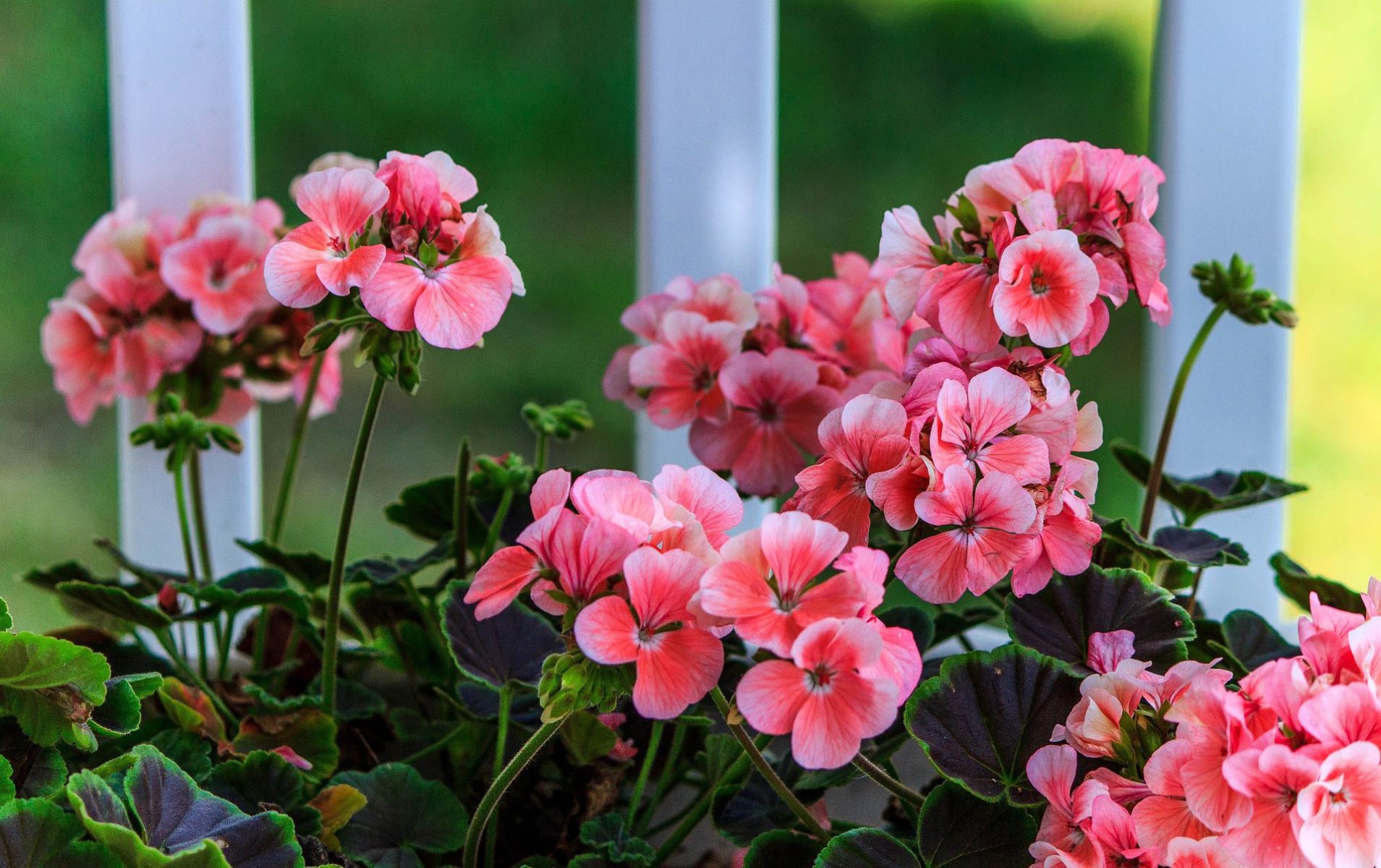
Each year the National Garden Bureau, selects a flower, perennial and vegetable to showcase, with plants being chosen for their popularity, variety, ease of growth, wide adaptability and versatility. This year the flower being featured is the much-loved, and very versatile geranium, botanically known as Pelargonium spp. In this instance, we're talking about beautiful, showy annual bedding plants, not the hardy perennial geraniums, although both Pelargonium and Geranium are in the same family.
 History of Geraniums
History of Geraniums
Since their discovery in South Africa and introduction to England in the 17th century, gardeners' enthusiasm for geraniums has never waned and breeding efforts have been ongoing since that time. At least 249 species of Pelargonium are known, all native to South Africa.
Geranium Types for the Home & Garden
There are four types of geraniums with which most gardeners are familiar. The most common is
- the zonal geranium, known as Pelargonium x hortorum,
- followed by ivy geranium, P. peltatum,
- regal geranium, P. x domesticum, which is also sometimes known as the Martha Washington geranium,
- and the scented geraniums that comprise about six different species.
Regal and scented geraniums are best used indoors as gift plants, while P. x hortorum and ivy geraniums do great outside in landscape plantings or containers. Zonal geraniums get their common name from a semi-circular area of darker leaf coloration, running across the middle of the leaf, although it is more evident in some cultivars than in others.
Seed vs. Cutting Propagated Geraniums
Geraniums can easily be propagated through stem cuttings, but since geraniums are susceptible to viruses and bacterial diseases that can be spread through cuttings, there was a need for cultivars that could be successfully seed propagated. Today plants may originate either from cuttings or seeds, however, with geraniums propagation method does have an effect on flower development. Specifically, seed propagated plants usually have a single layer of petals on each individual flower, while vegetatively propagated plants often have semi-double flowers. But since a geranium flowerhead is made up of many individual flowers, gardeners may not have noticed this difference.
Geranium species can now be easily crossed and the crossing of ivy and zonal geraniums created a new geranium class, the interspecific hybrids, resulting in some great cultivars for landscape use.
 Two interspecific geranium hybrids with good attributes for the landscape are the Calliope and Caliente series, each encompassing several colors. Plants in both series have strong branching, good heat tolerance and excellent disease resistance. Plants in the Calliope series most closely resemble zonal geraniums in leaf structure and form, while those in the Caliente series look and grow more like ivy geraniums. Look for plants sold under the Proven Winners brand in many local nurseries and garden centers.
Two interspecific geranium hybrids with good attributes for the landscape are the Calliope and Caliente series, each encompassing several colors. Plants in both series have strong branching, good heat tolerance and excellent disease resistance. Plants in the Calliope series most closely resemble zonal geraniums in leaf structure and form, while those in the Caliente series look and grow more like ivy geraniums. Look for plants sold under the Proven Winners brand in many local nurseries and garden centers.
However, so many great geranium cultivars are available in the nursery industry now that it's hard to go wrong if you find a flower color you love!
Growing Beautiful Geraniums
Zonal and ivy geraniums grow best in full sun or, at a minimum, 4-6 hours of direct sun each day. Choose a location with well-drained soil, and incorporate 3-4 inches of organic matter into heavy or sandy soil before planting for best growth.
Choosing which ones to plant may be the most difficult part. Single, semi-double and double-flowered cultivars in white, pink, salmon, red, lavender, rose, coral and bicolors; plants with scented leaves and fragrant flowers; ivy-leaved types ideal for hanging baskets and window boxes; and plant heights ranging from dwarf to tall are some of the options.
Look for healthy, dark green leaves free of spots, yellowing or pests, and compact plants. Plant them at the same depth or a little deeper than they were growing in the cell pack or pot. Geraniums in beds and borders should be spaced 8 to 12 inches apart. In containers, they combine well with dusty miller, lobelia, petunias and other sun-loving annuals.
Water regularly during dry weather. Check the soil in containers daily and water if it's dry to a depth of 2 inches or more. Remove spent flower heads weekly to keep plants looking neat and blooming continuously. Mulching plants in beds and borders will help conserve soil moisture and control weeds.
Geraniums are heavy feeders, so incorporate a granular fertilizer into the soil before planting, and apply a balanced, water soluble fertilizer (10-10-10) monthly throughout the summer.
Pest Problems
Geraniums are relatively pest free, but a couple of diseases can become garden problems.
Botrytis, an airborne fungal disease that appears when days are warm, nights are cool and plants are dripping with dew in the morning. It causes flowers to mold and turn to brown mush. At the first sign of moldy flowers, remove the whole blossom or, if necessary, the whole plant.
Xanthomonas, a bacterial disease, can be carried into the garden on infected plants. One of the early symptoms is leaf spotting; lower leaves eventually turn yellow and then brown but don't drop off. The plant then wilts as the bacteria plug up the plant's vascular system, preventing water from moving up the stems from the roots. Then the plant dies. The only treatment is to dispose of infected plants.
As fall approaches, plants can be lifted from the garden, cut back and potted, or cuttings can be started for growing indoors over the winter. To encourage compact growth and promote flowering use fluorescent fixtures to supplement natural light.
For more information on this year's featured plants, visit the National Garden Bureau.
Images of Geraniums by Pixabay.com